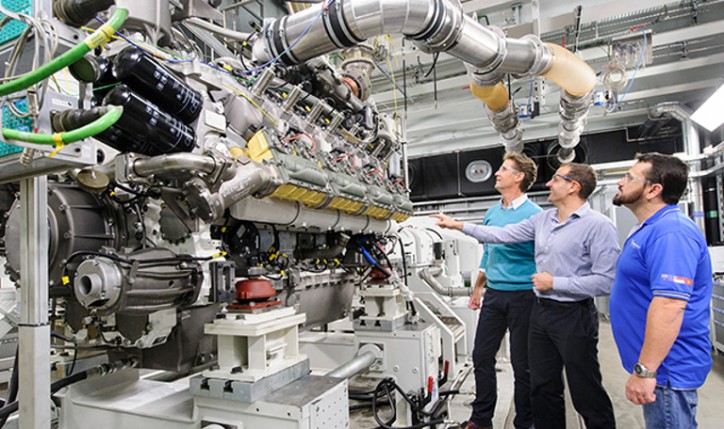- Rederij Doeksen shipping company, Strategic Marine shipbuilding company and Lloyd’s Register classification society complete acceptance tests of gas engines for Wadden Sea ferries
- Acceleration behaviour similar to that of a diesel engine
- Catamarans to enter ferry service on the Dutch North Sea as of 2018
The first two pre-production units of the new mobile MTU gas engine from Rolls-Royce successfully completed their performance tests and were accepted by the customer at the beginning of December. MTU had presented its new marine propulsion units for the first time at the SMM International Maritime Trade Fair in September 2016. The engines have meanwhile completed well over 5,000 hours on the test bench.

Paul Melles, Managing Director of Rederij Doeksen, said: “We are very happy with the test run. All the key engine parameters, such as the extremely dynamic acceleration behaviour, have now been verified by MTU.”
As the year 2017 comes to a close, MTU has delivered the first two of a total of four 16-cylinder Series 4000 gas engines, each with an output of 1,492 kW, for two new catamarans. From 2018, the two aluminium vessels will operate ferry services on the Dutch Wadden Sea. They are currently being built by Strategic Marine’s shipyard in Vietnam for the Dutch shipping company Doeksen.
In the course of the factory acceptance test, a wide range of performance tests were carried out. Besides the shipping company and the shipyard, Lloyd’s Register of Shipping staff were also impressed by the characteristics of the new mobile gas engine. An integral part of the test involved verifying the performance data, the fuel consumption and the engine’s safety features, such as the emergency stop. The emission measurements, as expected, demonstrated compliance with IMO III emission standards with no additional exhaust gas aftertreatment.
During the factory acceptance test in Friedrichshafen, Paul Melles said: “We decided in favour of a gas propulsion system, because we will be operating our ferries on the Wadden Sea, a World Heritage Site that has been declared a particularly sensitive area worthy of protection. MTU, with the appropriate pure gas engine, is the right partner for us.”
The new 16-cylinder gas engine from MTU will be available as of 2018 as a certified series production engine covering a power range from around 1,500 to 2,000 kW. An 8-cylinder version will follow with a rated output of approximately 750 to 1,000 kW. The new gas engine is ideally suited to tugboats, ferries, push boats and special purpose vessels such as research vessels. By comparison with a diesel engine without exhaust gas aftertreatment, the gas engine emits no soot particles and no sulphur oxides, 90 per cent less NOx and 10 per cent less greenhouse gas. It thus meets the IMO III emission standards in force since 2016 with no additional exhaust gas aftertreatment.
Source: Rolls-Royce